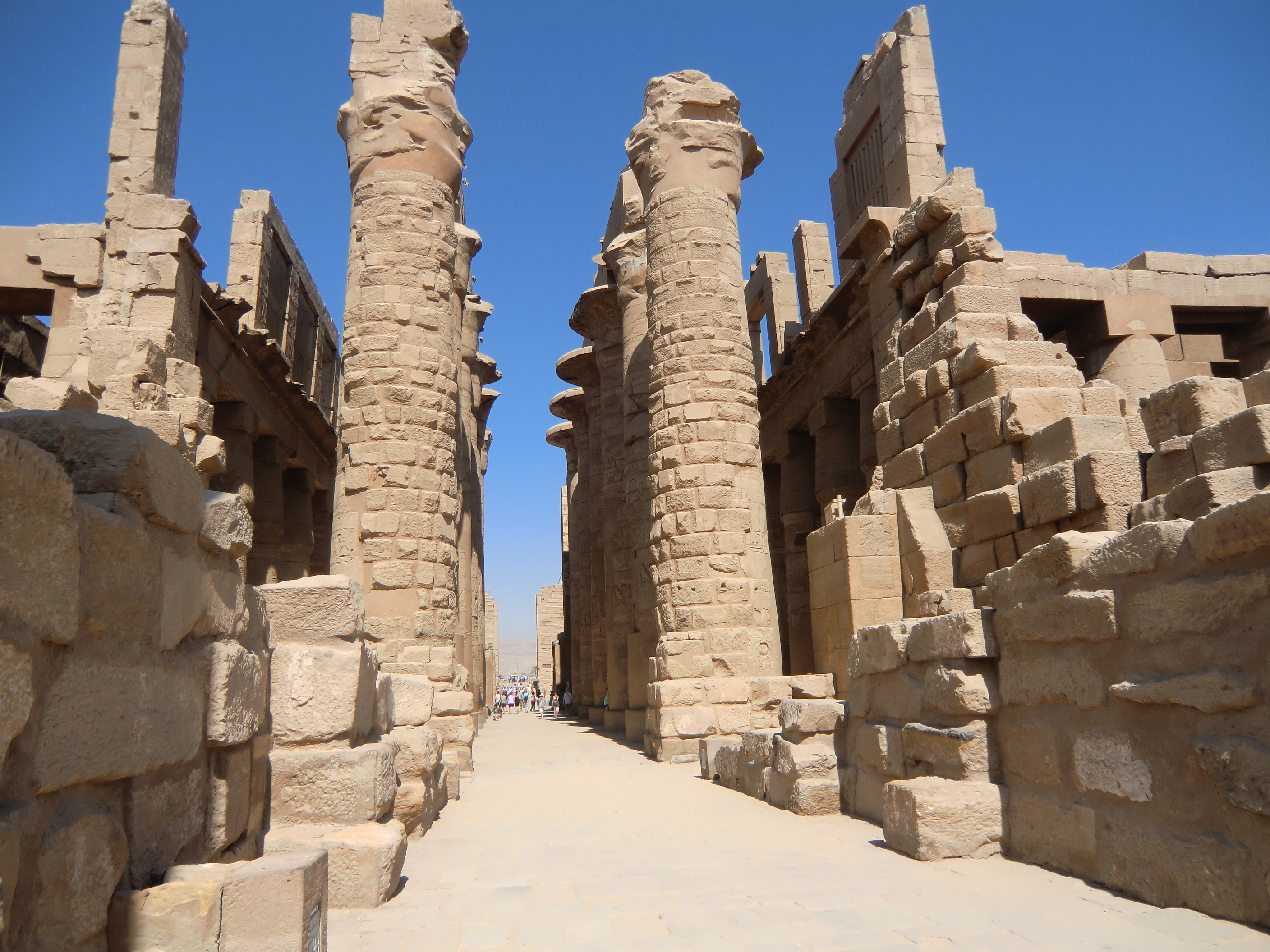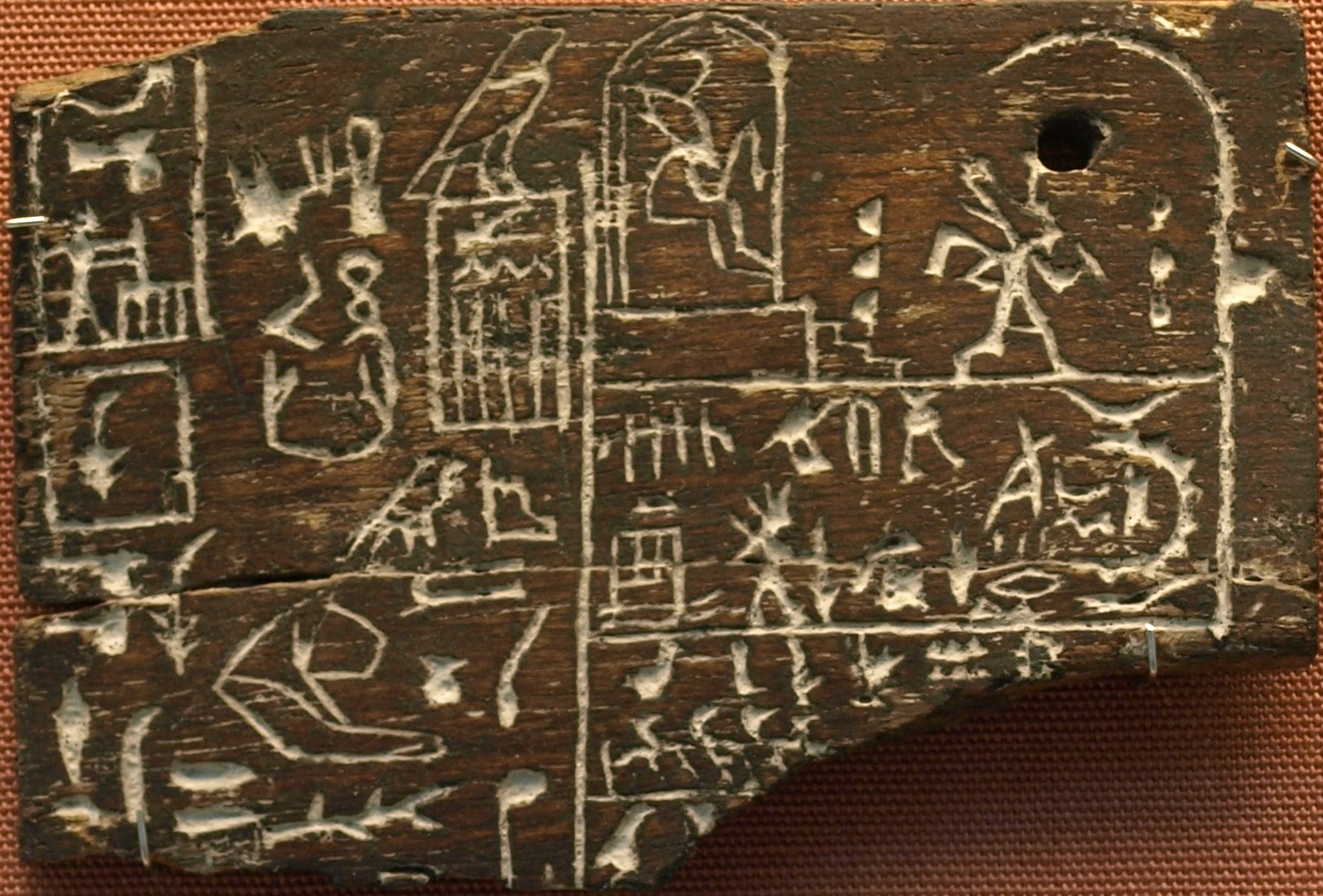|
Bakenkhons I
Bakenkhonsu ("Servant of Khonsu") was a High Priest of Amun in ancient Egypt during the reign of Pharaoh Ramesses II.Dodson, Aidan (2001). ''The Hieroglyphs of Ancient Egypt''. New York: Barnes & Noble. Hardcover: , p. 30. Information about his life was found on the back of his block statue (which is now located in Munich). The information on the statue provides details about the education of young Egyptian noblemen at that time and the career of priests. Bakenkhonsu is named for the god Khon su, ''traveller,'' a Moon God of ancient Egypt and son of Amun. Life According to the information inscribed on his statue, Bakenkhonsu was the son of Ipui, a priest of Amun (other sources suggest that he was the son of Roma, whose wife was also called Roma). His two younger brothers were Roma-Roi and Ipui. He spent four years at school, starting at the age of four, as was customary at that time. He then worked at the stables of Pharaoh Seti I for eleven years. There he learned to s ... [...More Info...] [...Related Items...] OR: [Wikipedia] [Google] [Baidu] |
Roma Called Roy
Roma called Roy was High Priest of Amun during the Nineteenth Dynasty of Egypt, at the end of the reign of Ramesses II and continued into the reigns of Merenptah and likely Seti II. Roma served as third and second priest of Amun and finally as first prophet (high priest) of Amun. He was also a count (h3ty-a), a prince (iry-pat) and a divine father pure of hands. Roma's wife Tamut is mentioned in his tomb,Porter and Moss, The Topographical Bibliography, Volume I Part 1. The Theban Necropolis. Private Tombs. (2nd ed.) 2004 while a wife named Tabest is named on a stele in Leiden.H.D. Schneider and M.J. Raven, Life and Death Under the Pharaohs, Australia, 1999, pg 40-41 Stele Also known is the stele from Leiden (Netherlands), which bears an inscription from Roma called Roy, and was once located on the east side of the eighth pylon of the Karnak temple. It is an important source of the history of the 19th dynasty. Contains information about the rise of the Theban priesthood, the i ... [...More Info...] [...Related Items...] OR: [Wikipedia] [Google] [Baidu] |
Karnak Temple
The Karnak Temple Complex, commonly known as Karnak (, which was originally derived from ar, خورنق ''Khurnaq'' "fortified village"), comprises a vast mix of decayed Egyptian temple, temples, Pylon (architecture), pylons, chapels, and other buildings near Luxor, Egypt. Construction at the complex began during the reign of Senusret I (reigned 1971–1926 BCE) in the Middle Kingdom of Egypt, Middle Kingdom (around 2000–1700 BCE) and continued into the Ptolemaic Kingdom (305–30 BCE), although most of the extant buildings date from the New Kingdom of Egypt, New Kingdom. The area around Karnak was the ancient Egyptian ''Ipet-isut'' ("The Most Selected of Places") and the main place of worship of the Eighteenth Dynasty of Egypt, 18th Dynastic Theban Triad, with the god Amun as its head. It is part of the monumental city of Thebes, Egypt, Thebes, and in 1979 it was inscribed on the UNESCO World Heritage List along with the rest of the city. The Karnak complex gives its name to ... [...More Info...] [...Related Items...] OR: [Wikipedia] [Google] [Baidu] |
Branch (hieroglyph)
The ancient Egyptian Branch hieroglyph, also called a Stick, is a member of the trees and plants hieroglyphs. The branch is an Egyptian language biliteral with the value ''(kh)t'', (khet)-(ḫt); it is an ideogram-(determinative), for wood, tree, and the linear measure (=100 cubits). The hieroglyph is described as a branch without leaves. As the value (kh)t, it is often complemented in a hieroglyphic block with ''kh''–("sieve"), Aa1 and ''"t"''–( bread bun). X1 Iconographic usage Pharaonic usage Pharaoh Nectanebo II used the branch hieroglyph for his Nomen name of ''Nakhthoreb'', "Strong is His Lord, Beloved of Hathor". Pharaoh Nectanebo I's nomen was ''Nekhtnebef'', "Strong is His Lord." Old Kingdom usage Two labels are known from the Old Kingdom showing usage of the ''branch hieroglyph'', one by Pharaoh Den, one by Semerkhet. The usage on the labels shows the branch hieroglyph in a more archaic form. Rosetta Stone usage of branch--"khet" In the 198 BC, ... [...More Info...] [...Related Items...] OR: [Wikipedia] [Google] [Baidu] |
Egyptian Hieroglyphs
Egyptian hieroglyphs (, ) were the formal writing system used in Ancient Egypt, used for writing the Egyptian language. Hieroglyphs combined logographic, syllabic and alphabetic elements, with some 1,000 distinct characters.There were about 1,000 graphemes in the Old Kingdom period, reduced to around 750 to 850 in the classical language of the Middle Kingdom, but inflated to the order of some 5,000 signs in the Ptolemaic period. Antonio Loprieno, ''Ancient Egyptian: A Linguistic Introduction'' (Cambridge: Cambridge UP, 1995), p. 12. Cursive hieroglyphs were used for religious literature on papyrus and wood. The later hieratic and demotic Egyptian scripts were derived from hieroglyphic writing, as was the Proto-Sinaitic script that later evolved into the Phoenician alphabet. Through the Phoenician alphabet's major child systems (the Greek and Aramaic scripts), the Egyptian hieroglyphic script is ancestral to the majority of scripts in modern use, most prominently the Latin and Cyr ... [...More Info...] [...Related Items...] OR: [Wikipedia] [Google] [Baidu] |
Staatliche Sammlung Für Ägyptische Kunst
The Staatliches Museum Ägyptischer Kunst (, ''State Museum of Egyptian Art'') is an archaeological museum in Munich. It contains the Bavarian state collection of ancient Egyptian art and displays exhibits from both the predynastic and dynastic periods. The associated small Middle East section displays objects from the areas of Assyrian and Babylonian culture. For decades, the Egyptian museum was located in the Munich Residenz, but it was moved to the Kunstareal in June 2013. Building A new, subterranean museum, opposite the Alte Pinakothek and reaching underneath the new structure for the University of Television and Film Munich was conceived by the architect Peter Böhm. The project was inspired by an ancient Egyptian burial chamber. Its entrance area is marked with a portal wall reminiscent of the pylon gateways to Egyptian temples. It offers some 1800 m² of exhibition space, with an additional 400 m² for special exhibitions. It is open since June 2013. The light-filled entr ... [...More Info...] [...Related Items...] OR: [Wikipedia] [Google] [Baidu] |
Musée Du Louvre
The Louvre ( ), or the Louvre Museum ( ), is the world's most-visited museum, and an historic landmark in Paris, France. It is the home of some of the best-known works of art, including the ''Mona Lisa'' and the ''Venus de Milo''. A central landmark of the city, it is located on the Right Bank of the Seine in the city's 1st arrondissement (district or ward). At any given point in time, approximately 38,000 objects from prehistory to the 21st century are being exhibited over an area of 72,735 square meters (782,910 square feet). Attendance in 2021 was 2.8 million due to the COVID-19 pandemic, up five percent from 2020, but far below pre-COVID attendance. Nonetheless, the Louvre still topped the list of most-visited art museums in the world in 2021."The Art Newspaper", 30 March 2021. The museum is housed in the Louvre Palace, originally built in the late 12th to 13th century under Philip II. Remnants of the Medieval Louvre fortress are visible in the basement ... [...More Info...] [...Related Items...] OR: [Wikipedia] [Google] [Baidu] |
Scribe's Palette
The ancient Egyptian Scribe equipment hieroglyph 𓏞 ( Gardiner no. Y3), or its reversed form 𓏟 ( Gardiner no. Y4), portrays the equipment of the scribe. Numerous scribes used the hieroglyph in stating their name, either on papyrus documents, but especially on statuary or tomb reliefs. The hieroglyph depicts the 3 major components of a scribe's equipment: # tube case – for holding writing-reeds # leather bag – for holding colored inks (the canonical colors, black and red, mixed with water and gum) # wood ''scribal palette'' – with mixing pools; (not always made from wood) Language usage The scribe equipment hieroglyph is often used as a determinative for items relating to writing or the scribe. Combined with the determinative for person 𓀀 ( Gardiner no. A1), the hieroglyph is read as ''zẖꜣw'', probably pronounced �açʀaw'' or �içɫu'' in Old Egyptian, and açʔaw'' or açʔufollowing the changes in pronunciation of ''z'' in Middle Egyptian ... [...More Info...] [...Related Items...] OR: [Wikipedia] [Google] [Baidu] |
World Museum Liverpool
World Museum is a large museum in Liverpool, England which has extensive collections covering archaeology, ethnology and the natural and physical sciences. Special attractions include the Natural History Centre and a planetarium. Entry to the museum is free. The museum is part of National Museums Liverpool. History The museum was originally started as the Derby Museum as it comprised the 13th Earl of Derby's natural history collection. It opened in 1851, sharing two rooms on Duke Street with a library. However, the museum proved extremely popular and a new, purpose-built building was required. Land for the new building, on a street then known as Shaw's Brow (now William Brown Street), opposite St George's Hall, was donated by local MP and Merchant William Brown, as was much of the funding for the building which would be known as the William Brown Library and Museum. Around 400,000 people attended the opening of the new building in 1860. Reports detailing the museum's a ... [...More Info...] [...Related Items...] OR: [Wikipedia] [Google] [Baidu] |
TT35
The Theban Tomb TT35 is located in Dra Abu el-Naga, part of the Theban Necropolis, on the west bank of the Nile, opposite to Luxor. It is the burial place of the ancient Egyptian noble named Bakenkhons I, who lived during the 19th Dynasty, during the reign of Ramesses II. Bakenkhons was a High Priest of Amun. Bakenkhonsu was the son of Roma, the High Priest of Amun and his wife who was also called Roma. Bakenkhons' wife was named Meretseger. She held the titles of Chief of the Harem of Amun Amun (; also ''Amon'', ''Ammon'', ''Amen''; egy, jmn, reconstructed as (Old Egyptian and early Middle Egyptian) → (later Middle Egyptian) → (Late Egyptian), cop, Ⲁⲙⲟⲩⲛ, Amoun) romanized: ʾmn) was a major ancient Egyptian .... See also * List of Theban tombs References Buildings and structures completed in the 13th century BC Theban tombs {{AncientEgypt-stub ... [...More Info...] [...Related Items...] OR: [Wikipedia] [Google] [Baidu] |
Thebes (Egypt)
, image = Decorated pillars of the temple at Karnac, Thebes, Egypt. Co Wellcome V0049316.jpg , alt = , caption = Pillars of the Great Hypostyle Hall, in ''The Holy Land, Syria, Idumea, Arabia, Egypt, and Nubia'' , map_type = Egypt , map_alt = , map_size = , relief = yes , coordinates = , location = Luxor, Luxor Governorate, Egypt , region = Upper Egypt , type = Settlement , part_of = , length = , width = , area = , height = , builder = , material = , built = , abandoned = , epochs = , cultures = , dependency_of = , occupants = , event = , excavations = , archaeologists = , condition = , ownership = , management = , public_access = , website = , notes = , designation1 = WHS , designation1_offname = Ancient The ... [...More Info...] [...Related Items...] OR: [Wikipedia] [Google] [Baidu] |
Karnak
The Karnak Temple Complex, commonly known as Karnak (, which was originally derived from ar, خورنق ''Khurnaq'' "fortified village"), comprises a vast mix of decayed temples, pylons, chapels, and other buildings near Luxor, Egypt. Construction at the complex began during the reign of Senusret I (reigned 1971–1926 BCE) in the Middle Kingdom (around 2000–1700 BCE) and continued into the Ptolemaic Kingdom (305–30 BCE), although most of the extant buildings date from the New Kingdom. The area around Karnak was the ancient Egyptian ''Ipet-isut'' ("The Most Selected of Places") and the main place of worship of the 18th Dynastic Theban Triad, with the god Amun as its head. It is part of the monumental city of Thebes, and in 1979 it was inscribed on the UNESCO World Heritage List along with the rest of the city. The Karnak complex gives its name to the nearby, and partly surrounded, modern village of El-Karnak, north of Luxor. Overview The complex is a vast open site an ... [...More Info...] [...Related Items...] OR: [Wikipedia] [Google] [Baidu] |
Twentieth Dynasty Of Egypt
The Twentieth Dynasty of Egypt (notated Dynasty XX, alternatively 20th Dynasty or Dynasty 20) is the third and last dynasty of the Ancient Egyptian New Kingdom period, lasting from 1189 BC to 1077 BC. The 19th and 20th Dynasties furthermore together constitute an era known as the ''Ramesside period''. This dynasty is generally considered to be the start of the decline of Ancient Egypt. History Background Upon the death of the last pharaoh of the 19th Dynasty, Queen Twosret, Egypt descended into a period of civil war, as attested by the Elephantine stela built by Setnakhte. The circumstances of Twosret's demise are uncertain, as she may have died peacefully during her reign or been overthrown by Setnakhte, who was likely already middle aged at the time. 20th Dynasty A consistent theme of this dynasty was the loss of pharaonic power to the High Priests of Amun. Horemheb, a pharaoh of the 18th Dynasty, had restored the traditional Ancient Egyptian religion and the priesthood ... [...More Info...] [...Related Items...] OR: [Wikipedia] [Google] [Baidu] |








